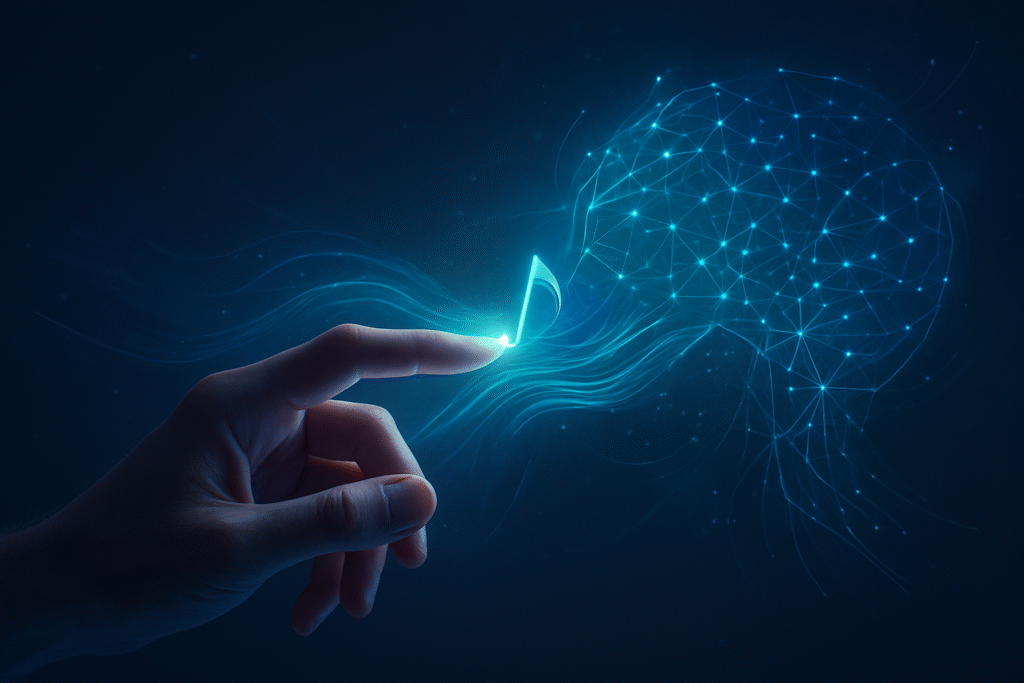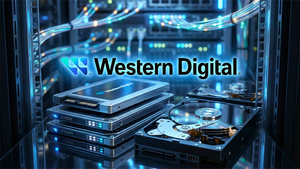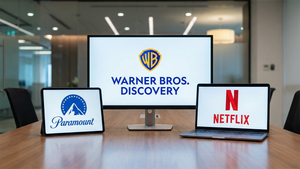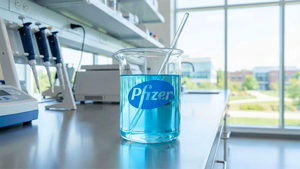
The landscape of creative industries is undergoing a profound transformation, driven by the burgeoning trend of human-AI collaboration. Far from merely serving as a tool to overcome creative blocks or automate mundane tasks, artificial intelligence is now emerging as a powerful co-creator, actively augmenting human ingenuity, generating novel ideas, and revolutionizing creative workflows across various domains. This symbiotic relationship is ushering in an era where human artists, designers, musicians, and writers are leveraging AI to push the boundaries of imagination, explore unprecedented artistic possibilities, and streamline their processes from conception to delivery.
This shift signifies a pivotal moment, moving beyond AI as a simple utility to its role as an integrated partner in the artistic process. The immediate significance is palpable: creators are experiencing accelerated production cycles, enhanced ideation capabilities, and the ability to experiment with concepts at a scale previously unimaginable. From composing intricate musical pieces to generating photorealistic visual art and crafting compelling narratives, AI is not replacing human creativity but rather amplifying it, enabling a richer, more diverse, and more efficient creative output.
The Algorithmic Muse: Deep Dive into AI's Creative Augmentation
The technical advancements underpinning this new wave of human-AI collaboration are sophisticated and diverse, marking a significant departure from earlier, more rudimentary applications. At its core, modern creative AI leverages advanced machine learning models, particularly generative adversarial networks (GANs) and transformer-based architectures, to understand, interpret, and generate complex creative content.
Specific details of these advancements are evident across numerous fields. In visual arts and design, generative AI models such as DALL-E, Midjourney, and Stable Diffusion have become household names, capable of producing photorealistic images, abstract artwork, and unique design concepts from simple text prompts. These models learn from vast datasets of existing imagery, allowing them to synthesize new visuals that often exhibit surprising originality and artistic flair. For video production, advanced AI creative engines like LTX-2 are integrating AI into every stage, offering synchronized audio and video generation, 4K fidelity, and multiple performance modes, drastically cutting down on production times and enabling real-time iteration. In music, AI assists with composition by generating chord progressions, melodies, and even entire instrumental tracks, as famously demonstrated in the AI-enhanced restoration and release of The Beatles' "Now and Then" in 2023. Writing assistants, powered by large language models, can help with plot structures, dialogue generation, narrative pacing analysis, brainstorming, drafting, editing, and proofreading, acting as an intelligent sounding board for authors and content creators.
This differs significantly from previous approaches where AI was largely confined to automation or rule-based systems. Earlier AI tools might have offered basic image editing filters or grammar checks; today's AI actively participates in the ideation and creation process. It's not just about removing a background but generating an entirely new one, not just correcting grammar but suggesting alternative narrative arcs. The technical capability lies in AI's ability to learn complex patterns and styles, then apply these learnings to generate novel outputs that adhere to a specific aesthetic or thematic brief. Initial reactions from the AI research community and industry experts, while acknowledging ethical considerations around copyright, bias, and potential job displacement, largely celebrate these developments as expanding the horizons of human artistic expression and efficiency. Many view AI as a powerful catalyst for innovation, enabling creators to focus on the conceptual and emotional depth of their work while offloading technical complexities to intelligent algorithms.
The Shifting Sands of Industry: How AI Reshapes Tech Giants and Startups
The rapid evolution of human-AI collaboration in creative industries extends far beyond mere technological novelty; it's a seismic shift that is profoundly impacting the competitive landscape for AI companies, established tech giants, and nimble startups alike. Companies that successfully integrate AI as a co-creative partner are poised to gain significant strategic advantages, while those that lag risk disruption.
Tech behemoths like Adobe (NASDAQ: ADBE), Google (NASDAQ: GOOGL), and Microsoft (NASDAQ: MSFT) are strategically embedding generative AI into their core product ecosystems, positioning AI as an indispensable companion for creatives. Adobe, for instance, has deeply integrated its generative AI model, Firefly, into flagship applications like Photoshop and Illustrator. Their "Adobe AI Foundry" initiative goes a step further, offering bespoke AI partnerships to Fortune 2000 brands, enabling them to generate millions of on-brand assets by plugging custom AI models directly into existing creative workflows. This strategy not only accelerates creative tasks but also solidifies Adobe's market dominance by making their platform even more indispensable. Similarly, Google views AI as a democratizing force, equipping individuals with AI skills through programs like "Google AI Essentials" and fostering experimentation through initiatives like the AI Music Incubator, a collaboration between YouTube and Google DeepMind. Microsoft's Copilot Fall Release emphasizes "human-centered AI," transforming Copilot into a flexible AI companion that boosts creativity and productivity, with features like "Groups" for real-time collaboration and "Imagine" for remixing AI-generated ideas, integrating seamlessly across its operating system and cloud services.
The competitive implications for major AI labs and tech companies are intense. Companies like OpenAI (private) and Google DeepMind, developers of foundational models like GPT-4 and Lyria 2, are becoming the underlying engines for creative applications across industries. Their ability to develop robust, versatile, and ethical AI models is critical for securing partnerships and influencing the direction of creative AI. The race is on to develop "agentic AI" that can understand complex goals and execute multi-step creative tasks with minimal human intervention, promising to unlock new levels of operational agility and revenue. Startups, on the other hand, are carving out valuable niches by focusing on specialized AI solutions that augment human capabilities in specific creative tasks. Companies like Higgsfield, offering AI video and photo generation, are democratizing cinematic production, lowering barriers to entry, and expanding the creative market. Other startups are leveraging AI for highly targeted applications, from generating marketing copy (e.g., Jasper, Copy.ai) to providing AR guidance for electricians, demonstrating the vast potential for specialized AI tools that complement broader platforms.
This evolution is not without disruption. Traditional creative workflows are being re-evaluated as AI automates routine tasks, freeing human creatives to focus on higher-value, strategic decisions and emotional storytelling. While concerns about job displacement persist, generative AI is also creating entirely new roles, such as AI Creative Director, Visual System Designer, and Interactive Content Architect. The ability of AI to rapidly generate multiple design concepts or initial compositions is accelerating the ideation phase in fields like interior design and advertising, fundamentally altering the pace and scope of creative development. Companies that fail to adapt and integrate these AI capabilities risk falling behind competitors who can produce content faster, more efficiently, and with greater creative depth. Market positioning now hinges on a human-centered AI approach, seamless integration into existing tools, and a strong commitment to ethical AI development, ensuring that technology serves to enhance, rather than diminish, human creative potential.
The Broader Canvas: AI's Impact on Society and the Creative Economy
The integration of human-AI collaboration into creative industries extends far beyond mere technological novelty; it represents a fundamental shift within the broader AI landscape, carrying profound societal and ethical implications that demand careful consideration. This trend is not just about new tools; it's about redefining creativity, challenging established legal frameworks, and reshaping the future of work.
This evolution fits squarely into the overarching trend of AI moving from automating physical or routine cognitive tasks to its deep integration into the inherently human domain of creativity. Unlike previous waves of automation that primarily affected manufacturing or data entry, current generative AI advancements, powered by sophisticated models like GPT-4o and Google's Gemini, are engaging with domains long considered exclusive to human intellect: art, music, writing, and design. This signifies a move towards "superagency," where human and machine intelligences synergize to achieve unprecedented levels of productivity and creativity. This collaborative intelligence anticipates human needs, paving the way for innovations previously unimagined and fundamentally challenging the traditional boundaries of what constitutes "creative work."
However, this transformative potential is accompanied by significant ethical and societal concerns. Algorithmic bias is a paramount issue, as AI models trained on historically biased datasets can inadvertently homogenize cultural expression, reinforce stereotypes, and marginalize underrepresented voices. For instance, an AI trained predominantly on Western art might inadvertently favor those styles, overlooking diverse global traditions and creating feedback loops that perpetuate existing disparities in representation. Addressing this requires diverse datasets, transparency in AI development, and community participation. Intellectual property (IP) also faces a critical juncture. Traditional IP laws, built around human creators, struggle to define authorship and ownership of purely AI-generated content. While some jurisdictions, like the UK, have begun to address "computer-generated artworks," the copyrightability of AI-created works remains a contentious issue globally, raising questions about fair use of training data and the need for new legal frameworks and licensing models.
Perhaps the most pressing concern is job displacement. While some analysts predict AI could potentially replace the equivalent of hundreds of millions of full-time jobs, particularly in white-collar creative professions, others argue for a "displacement" effect rather than outright "replacement." AI, by increasing efficiency and content output, could lead to an oversupply of creative goods or the deskilling of certain creative roles. However, it also creates new job opportunities requiring different skill sets, such as AI Creative Directors or Data Curators for AI models. The 2023 SAG-AFTRA and Writers Guild of America strikes underscored the urgent need for AI to serve as a supportive tool, not a substitute, for human talent. Comparing this to previous AI milestones, such as the introduction of computer-generated imagery (CGI) in film, provides perspective. CGI didn't replace human animators; it enhanced their capabilities and expanded the possibilities of visual storytelling. Similarly, today's AI is seen as an enabler, redefining roles and providing new tools rather than eliminating the need for human artistry. The broader implications for the creative economy involve a redefinition of creativity itself, emphasizing the unique human elements of emotion, cultural understanding, and ethical judgment, while pushing for ethical governance and a workforce adaptable to profound technological change.
The Horizon of Imagination: Future Developments in Human-AI Collaboration
The trajectory of human-AI collaboration in creative industries points towards an even more integrated and sophisticated partnership, promising a future where the lines between human intent and algorithmic execution become increasingly blurred, leading to unprecedented creative output. Both near-term and long-term developments are set to revolutionize how we conceive, produce, and consume creative content.
In the near term, we can expect significant advancements in the personalization and adaptability of AI creative tools. AI will become even more adept at learning individual creative styles and preferences, offering hyper-tailored suggestions and executing tasks with a deeper understanding of the artist's unique vision. We'll see more intuitive interfaces that allow for seamless control over generative outputs, moving beyond simple text prompts to more nuanced gestural, emotional, or even thought-based inputs. Real-time co-creation environments will become standard, enabling multiple human and AI agents to collaborate simultaneously on complex projects, from dynamic film scoring that adapts to narrative shifts to architectural designs that evolve in response to user feedback. The integration of AI into augmented reality (AR) and virtual reality (VR) environments will also accelerate, allowing creators to sculpt virtual worlds and experiences with AI assistance directly within immersive spaces. Furthermore, advancements in multimodal AI will enable the creation of cohesive projects across different media types – for example, an AI could generate a story, compose a soundtrack, and design visual assets for an entire animated short film, all guided by a human director.
Looking further ahead, the long-term vision involves AI as a truly proactive creative partner, capable of not just responding to prompts but anticipating needs, suggesting entirely new conceptual directions, and even identifying untapped creative markets. Experts predict the rise of "meta-creative AIs" that can learn and apply abstract principles of aesthetics, narrative, and emotional resonance, leading to truly novel artistic forms that might not have originated from purely human imagination. Ethical AI frameworks and robust intellectual property solutions will become paramount, addressing current challenges around authorship, ownership, and fair use, ensuring a sustainable and equitable creative ecosystem. The primary challenge remains balancing AI's growing capabilities with the preservation of human agency, originality, and the unique emotional depth that human creators bring. Experts foresee a future where the most valued creative professionals will be those who can effectively "prompt," "curate," and "direct" sophisticated AI systems, transforming into meta-creators who orchestrate complex human-AI ensembles to achieve their artistic goals. The focus will shift from what AI can do to how humans and AI can achieve extraordinary creative feats together, pushing the boundaries of what is aesthetically possible.
The Collaborative Imperative: A New Dawn for Creativity
The journey into human-AI collaboration in creative industries reveals a landscape undergoing radical transformation. This article has explored how AI has moved beyond a mere utility for overcoming creative blocks or automating mundane tasks, evolving into a powerful co-creator that augments human ingenuity, generates novel ideas, and streamlines complex creative workflows across diverse fields. From music composition and visual arts to writing and film production, AI is not replacing the human touch but rather amplifying it, enabling unprecedented levels of efficiency, experimentation, and artistic output.
The significance of this development in AI history cannot be overstated. It marks a pivotal shift from AI primarily automating physical or routine cognitive tasks to its deep integration into the inherently human domain of creativity. This is not just another technological advancement; it's a redefinition of the creative process itself, akin to foundational breakthroughs like the printing press or digital art software, but with the unique capability of intelligent co-creation. Tech giants like Adobe (NASDAQ: ADBE), Google (NASDAQ: GOOGL), and Microsoft (NASDAQ: MSFT) are strategically embedding AI into their core offerings, while innovative startups are carving out niche solutions, all contributing to a dynamic and competitive market. However, this progress comes with crucial ethical considerations, including algorithmic bias, the complexities of intellectual property in an AI-generated world, and the evolving nature of job roles within the creative economy. Addressing these challenges through proactive policy-making, ethical design, and educational adaptation will be critical for harnessing AI's full potential responsibly.
The long-term impact of this synergistic relationship promises a future where human creativity is not diminished but rather expanded and enriched. AI will serve as an ever-present muse, assistant, and technical executor, freeing human artists to focus on the conceptual, emotional, and uniquely human aspects of their work. We are heading towards a future of highly personalized and adaptive creative tools, real-time co-creation environments, and multimodal AI capabilities that can seamlessly bridge different artistic disciplines. The ultimate success will hinge on fostering a balanced partnership where AI empowers human expression, rather than overshadowing it.
In the coming weeks and months, watch for further announcements from major tech companies regarding new AI features integrated into their creative suites, as well as innovative offerings from startups pushing the boundaries of niche creative applications. Pay close attention to ongoing discussions and potential legislative developments surrounding AI ethics and intellectual property rights, as these will shape the legal and moral framework for this new creative era. Most importantly, observe how artists and creators themselves continue to experiment with and adapt to these tools, as their ingenuity will ultimately define the true potential of human-AI collaboration in shaping the future of imagination.
This content is intended for informational purposes only and represents analysis of current AI developments.
TokenRing AI delivers enterprise-grade solutions for multi-agent AI workflow orchestration, AI-powered development tools, and seamless remote collaboration platforms.
For more information, visit https://www.tokenring.ai/.







